Why PeerJ?
We know there are a number of different considerations when deciding where to publish your research. The information below highlights PeerJ's distinct advantages compared with other leading publishing options. If you have a question: support@peerj.com.
Excellent reputation

- Authors at 2000+ institutions, including all top universities.
- A prestigious editorial board, including 5 Nobel Laureates.
- Full members of COPE and OASPA, as well as 12 other publishing partners.
- Articles regularly featured in top media outlets.
Since our launch 12 years ago we have quickly earned a reputation as a high-quality publisher that attracts and publishes world-class research.
See our key milestones and events on our timeline page:
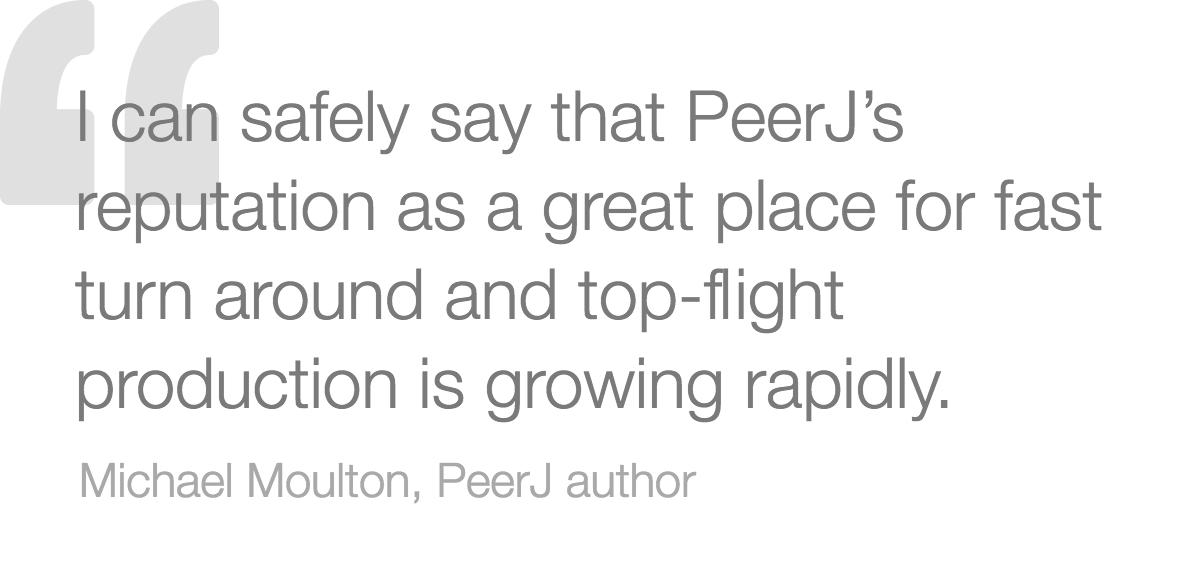
Broad Audience

- 85.5M views and downloads (1M monthly viewers).
- 70,000 researchers subscribed to PeerJ article alerts.
- Publishing research across 228 subjects.
- PeerJ articles appear regularly in Altmetric's top 100 global impact rankings.
- Use our press release service to get your article picked up in newspapers, magazines, broadcast tv and online channels.
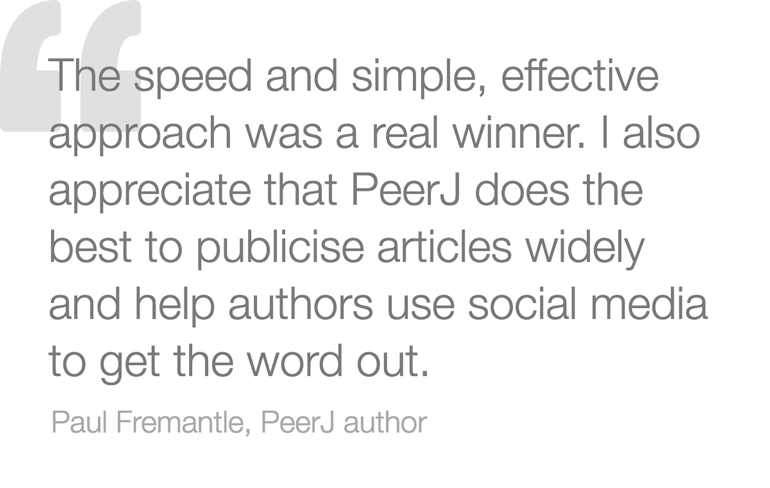
Career-stage benefits
Early-career
- Broaden your CV by publishing in a multidisciplinary journal, ensuring a larger audience for your next article.
- Enhance your academic reputation and boost citations with open publishing data sharing.
- Engaged and constructive author support from journal staff.
- Peer review based on methodological soundness, not impact or novelty.
- Open Access publishing maximizes readership of your work.
Senior
- Prestigious editorial board delivering high-quality peer review.
- Thoughtful, in-depth and constructive reviews provided by engaged reviewers.
- Indexed in Pubmed Central (PMC), MEDLINE, Scopus, Web of Science SCIE and Journal Citation Reports +20 more.
- Articles regularly featured in top science media and news outlets.
- Broad audience means your work will be read across many different fields.
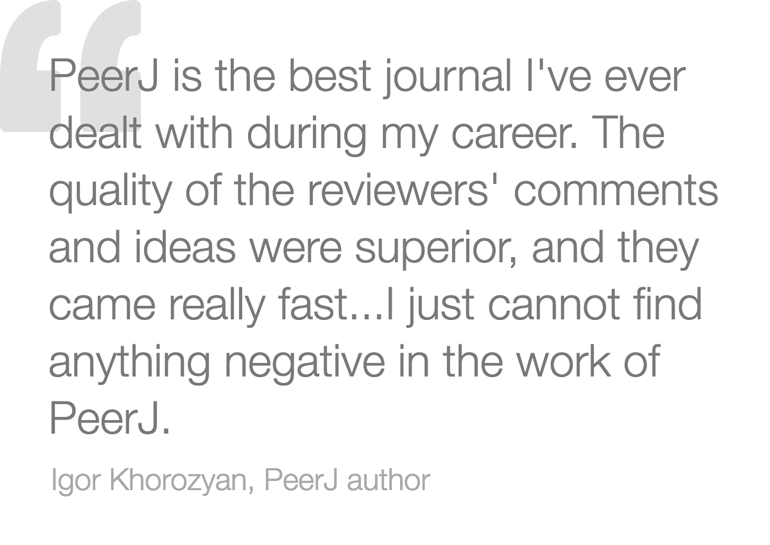
High-quality peer review

- A dedicated editor handles your article, and two or more reviewers provide in-depth reviews.
- Multiple rounds of review.
- A high-calibre editorial board.
- 99.4% of published authors surveyed so far (1430+) would recommend PeerJ to a colleague.
- Publishing your review history supports constructive, and high-quality reviewing.
We focus on delivering a constructive peer review process based on methodological soundness rather than subjective considerations of impact or novelty.
Most journals use peer review software that slows and frustrates their editors and reviewers.
Our submission system is built from the ground up to make submitting, reviewing and editing as easy - and dare we say enjoyable - as possible. This in turn delivers more in-depth reviews, faster, and more often.
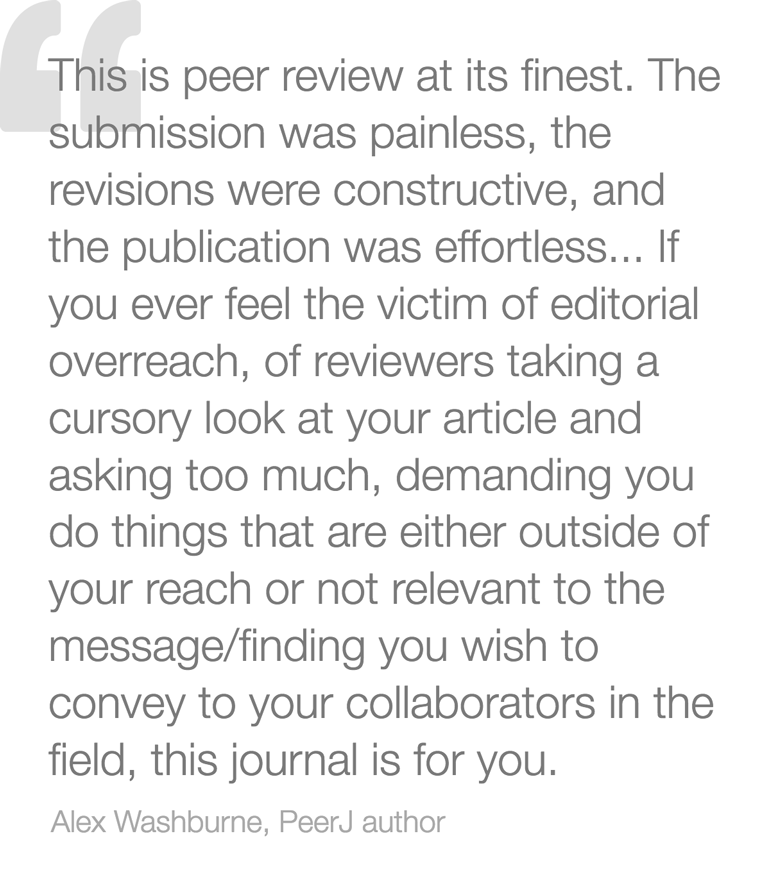
Impact factor

The widespread misuse of the JIF impact factor contributes to the reproducibility crisis, higher and slower publishing costs and academic fraud.
Instead, the citation distribution is now being used by a growing number of journals as a far better indicator for the spread and variation of citations.
Using the generally recognised citation time-lag of two years, PeerJ's 2017 median citation distribution is 5.
In detail:
- 90th percentile: 18.6 citations.
- 75th percentile: 10 citations.
- 50th percentile: 5 (median)
- 25th percentile: 2 citations.
PeerJ's 2020 Journal Impact Factor is 2.7.
PeerJ Computer Science's 2020 Journal Impact Factor is 3.8.
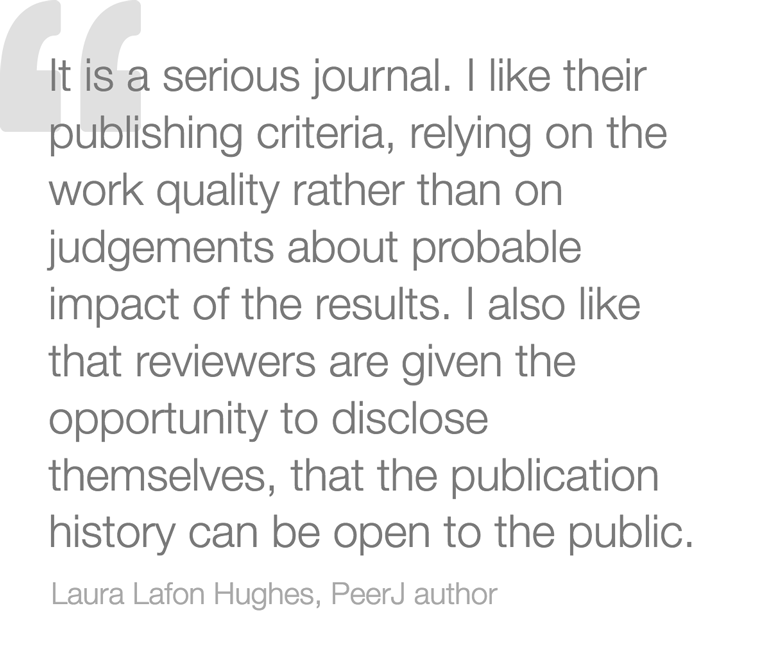
Fast publishing

- Significantly faster than PLOS ONE (2.5x) and Scientific Reports (1.7x).
- Our innovative peer-review system helps you, your editor, and your reviewers work faster and smarter.
- We publish five days a week, as soon as articles are ready for publication, to ensure no further delays in the publishing process.
- Attentive and engaged support staff will help you throughout your article's publication journey.
- No reference formatting requirements on submitted manuscripts - saving you hours of submission time.
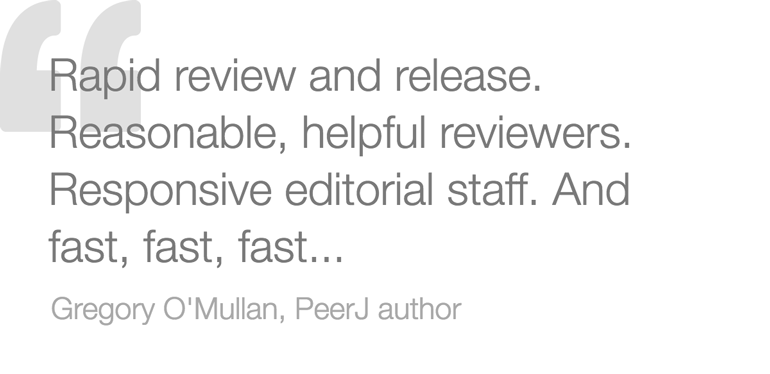
Great publishing tools

- Fully typeset publication proofs allow you to catch last minute mistakes to your article before publication. We are one of the few OA publishers to offer this service.
- Press release service to help generate coverage in online, print and TV media outlets.
- Indexed in Pubmed Central (PMC), MEDLINE, Scopus, Web of Science SCIE and Journal Citation Reports +20 more indexing and archival services automatically on publication.
- 'One click' submission supported from bioRxiv, Overleaf, and Peerage of Science.
- Post publication sharing tools, to help you boost the reach and impact of your work.

Low cost / great value

- Submit for free and pay on acceptance.
- Get a PeerJ individual membership for a one-off payment, and publish regularly forever, for no additional cost.
- Our article-processing charge (APC) is significantly cheaper than similar journals.
- Check if your institution has a prepaid publishing plan with us to cover your publishing costs.

